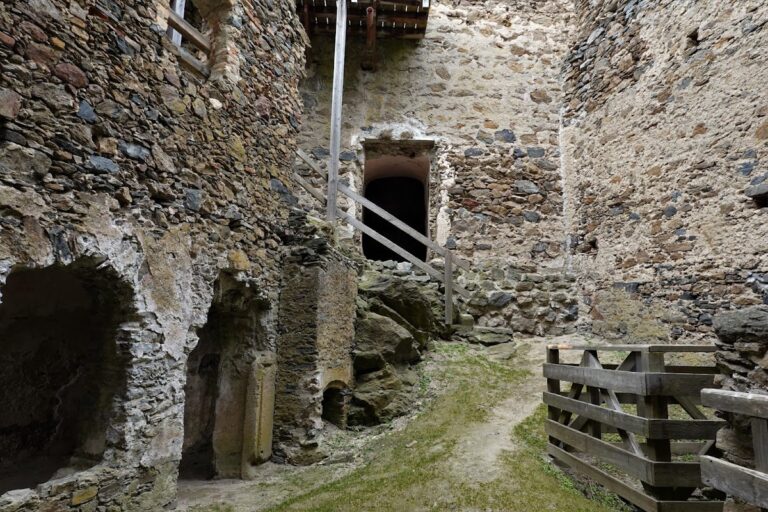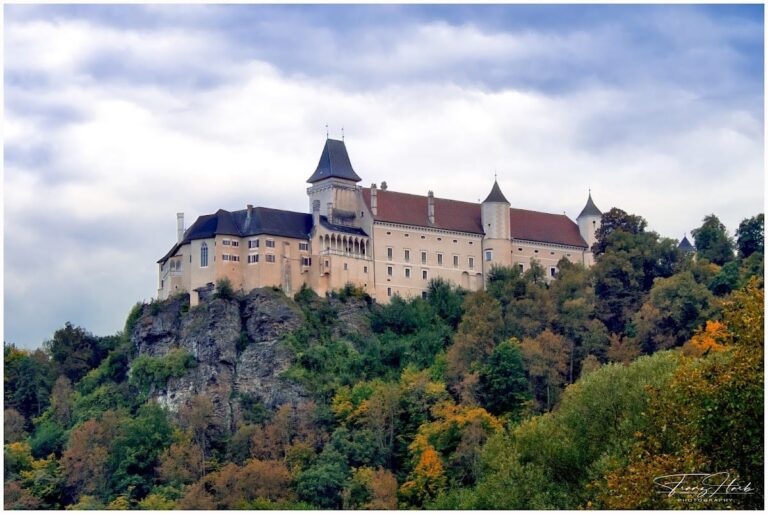Burgruine Senftenberg: A Medieval Castle Ruin in Austria
Visitor Information
Google Rating: 4.8
Popularity: Low
Google Maps: View on Google Maps
Official Website: www.burgruinesenftenberg.at
Country: Austria
Civilization: Medieval European
Remains: Military
History
Burgruine Senftenberg is a medieval castle ruin located in the municipality of Senftenberg, Austria. It was originally built by the high noble family of Lengenbach, a prominent group in the region, who were also responsible for constructing several other castles nearby in Rehberg.
The earliest known record of the site dates back to April 26, 1197, when a noble named Rudegerus de Senftenberc appeared as a witness in a legal document. Ownership of the castle changed hands multiple times over the centuries. In the 13th century, the Zebringer family controlled it, followed by the Wallseer family who held possession during the 14th and 15th centuries. Additionally, the noble lines connected to the original Lengenbach builders adopted the names Senftenberg and Minnenbach as they established their presence.
Between 1407 and 1409, Burgruine Senftenberg suffered partial destruction amid disputes over guardianship, a form of medieval oversight or stewardship often linked to conflicts about inheritance or authority. The castle was rebuilt following this period of damage. However, by the early 16th century, around 1520, the site had gained a reputation for harboring highwaymen, indicating a decline from its former noble function.
The castle also played a protective role during the Turkish siege of Vienna in 1529, serving as a refuge for local inhabitants fleeing the advancing Ottoman forces. Later, toward the end of the 16th century, the fortress was repeatedly attacked during the regional peasant wars, reflecting the growing social and political unrest of the time.
In the mid-17th century, specifically 1645 during the Thirty Years’ War, Swedish soldiers led by General Torstenson seized the castle. Following their capture, the troops deliberately destroyed the stronghold, leaving it in ruins. From then on, Burgruine Senftenberg remained largely abandoned, entering a lasting state of decay. In recent times, a local preservation group obtained a long-term lease on the remains and began efforts to stabilize and maintain the site.
Remains
The layout of Burgruine Senftenberg reflects typical medieval castle architecture with an emphasis on defense and strategic observation, situated atop a hill around 271 meters above sea level. Among the preserved structures are three gatehouses, which historically functioned as controlled entry points designed to protect the castle’s interior spaces. These gatehouses would have combined robust stone construction with narrow doorways and defensive features to withstand sieges.
A prominent feature of the site is the shield wall, a fortified stone barricade intended to absorb and deflect attacks. This wall stands out as unusual within Austrian castle constructions, where such defensive elements are less common. Its presence underscores the importance placed on protecting the castle from frontal assault.
The main tower, known as the bergfried, retains a distinctive and complex form. At its base, the bergfried is rectangular in shape, transitioning into an oval middle section, and culminating in a hexagonal upper portion. This layered design may have served both architectural and defensive purposes, providing multiple vantage points and structural strength.
Aside from the bergfried, there is an additional tower whose specific functions are not detailed but would have likely contributed to the overall fortification and surveillance capabilities of the castle.
Parts of the ruin that remained in use suffered significant damage from a fire suspected to have started after an unauthorized entry into a tool shed. Despite the blaze, the wooden bridge leading into the castle survived. Such bridges typically acted as access routes over defensive ditches or uneven terrain, and their preservation adds to understanding the site’s functional components.
Today, these remnants bear witness to the castle’s long and often turbulent history, preserved in stone and wood and cared for by local conservation efforts.







